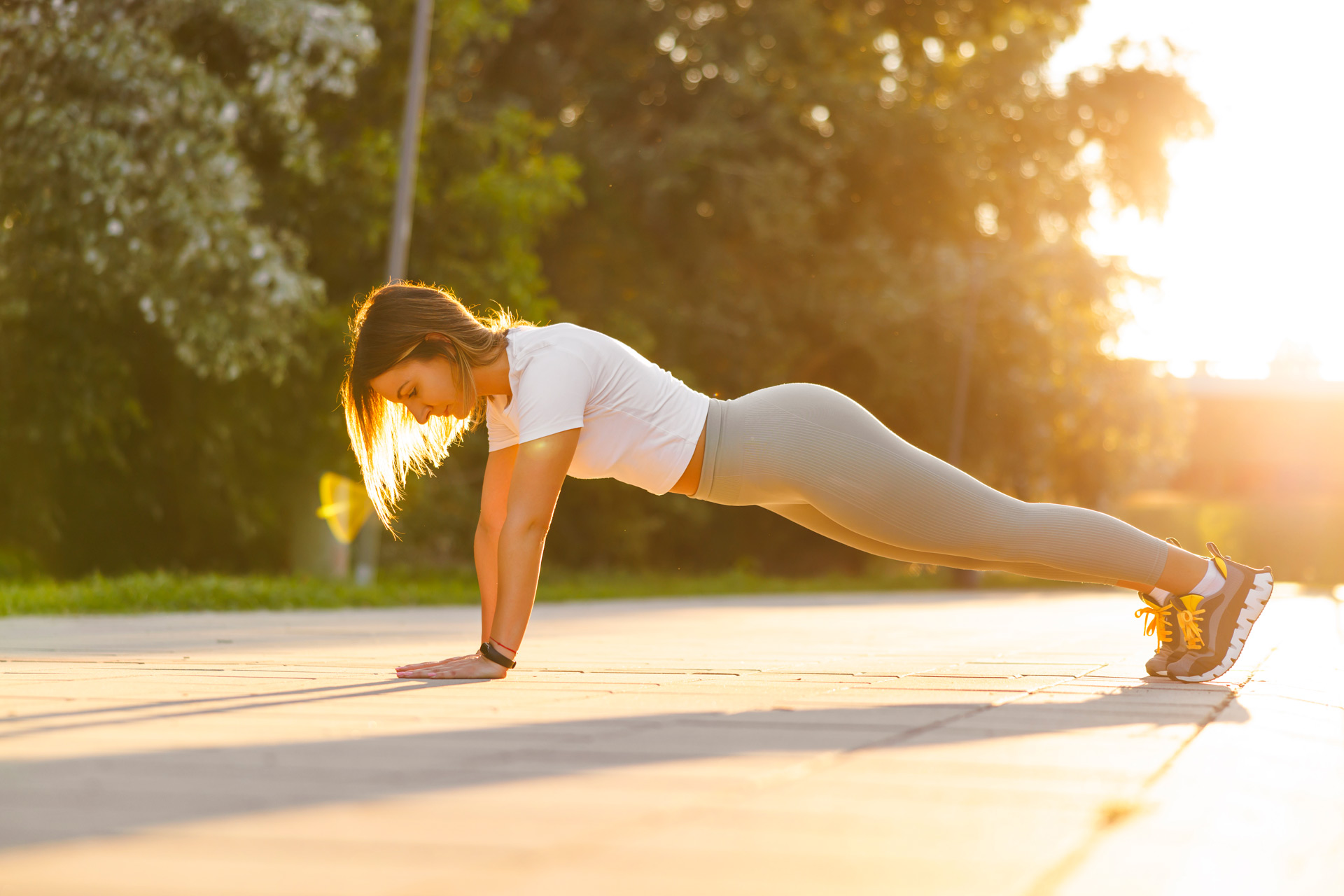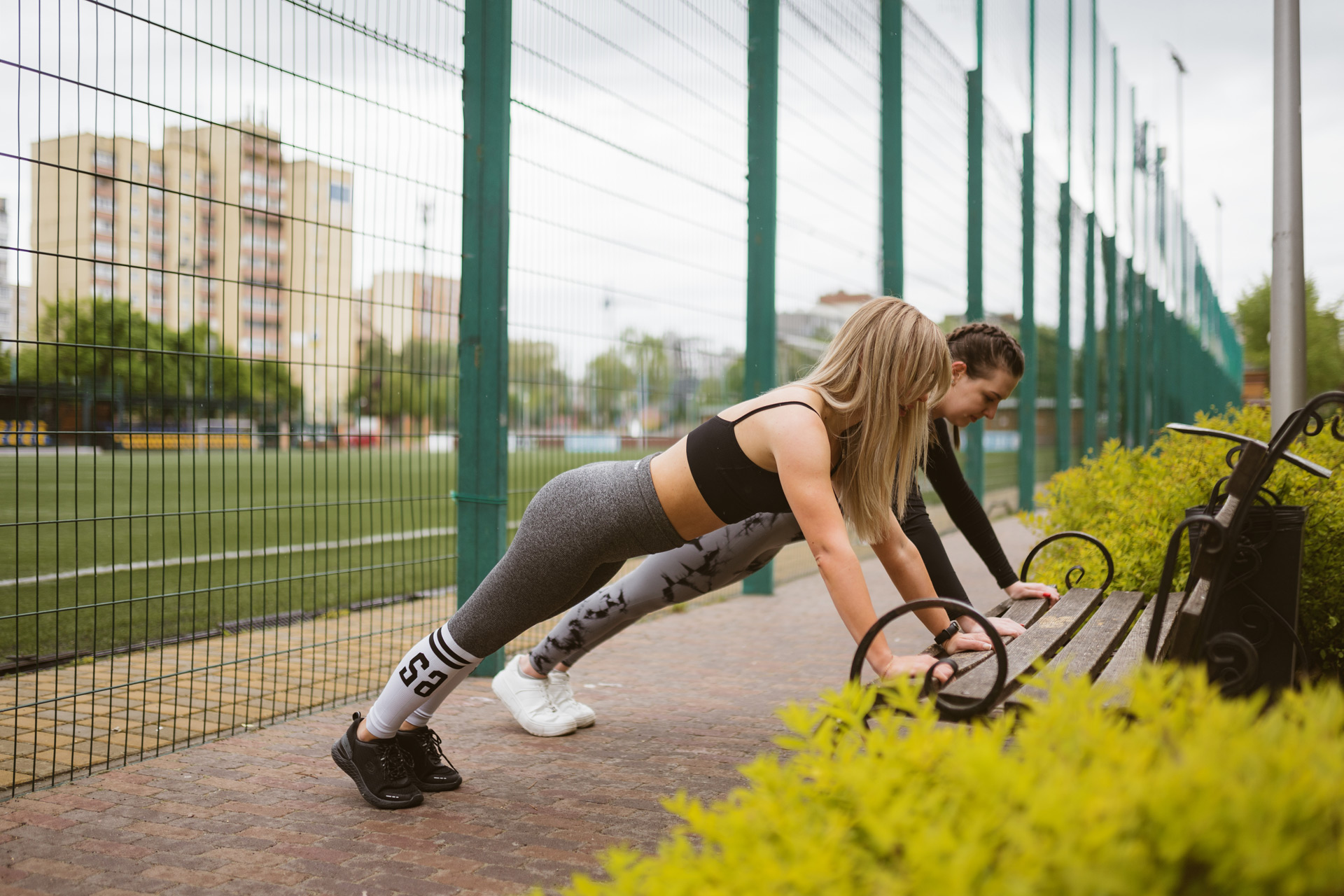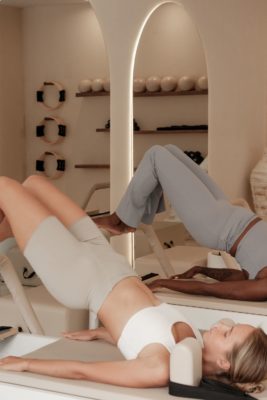How To Teach Yourself To Do A Press Up, According To A PT
By
3 months ago
Expert tips for perfecting your push up form

The press up is the holy grail of bodyweight moves – but it’s also one of the hardest. Lowering and raising your body in a prone position is surprisingly tough: it requires both strength and skill, and for many people achieving just one can feel near-impossible. But with proper form and a bit of practise, anyone can learn to master the exercise. Here C&TH’s Ellie Smith, a qualified personal trainer, shares a step-by-step guide to achieving your first press up. A fitness goal for 2025, perhaps?
A Beginner’s Guide To Press Ups
How To Do A Press Up With Correct Form
Also known as a push up, a press up is a compound bodyweight exercise which works the chest, shoulders, core and triceps. Requiring no equipment, it can be performed anywhere – but the move is often done with incorrect form, which can lead to excessive joint stress and muscular imbalances.
To do a press up correctly:
- Start in a high plank position. Your feet should be hip-width apart, and your hips should be in line with your shoulders.
- Brace your core to ensure a neutral spine, squeeze your shoulder blades together, and engage your glutes.
- Bend your elbows to lower the chest, hips and head towards the floor. Keep pressure in your hands, and stop as close to the floor as possible.
- Pause briefly, then press your body upwards, extending your arms back into the high plank position. To do this, engage your pectoral muscles and imagine you’re pushing the ground away from you. Think about really activating the core and recruiting the triceps.
Common Mistakes To Avoid
- Don’t let your hips sag – but they shouldn’t be hiked up in the air either. To avoid this, brace the core and think about moving your body as one unit.
- Avoid putting your hands too far forward or too far apart. They should be at chest level, slightly wider than shoulder width apart.
- Be careful not to flare the elbows, as this will increase the strain on your shoulders and wrists. Angle them towards your hip bones.
- One of the most common press up mistakes is performing it with a limited range of motion, both on the way up and on the way down. Come as close to the floor as you can, and fully extend your arms at the top. It’s harder, but it’s better to do one correctly than bash out ten half reps.
- Don’t rush: slow and controlled is the key here.
How To Build Up To Your First Press Up
A press up works many muscles including the pectorals (chest), deltoids (shoulders), latissimus dorsi (back) and core. Although it may look basic, it’s an intermediate exercise, so if you’re struggling to master the move it can help to focus on strengthening the muscles involved first. Add exercises like chest presses, shoulder presses, tricep dips, bicep curls and rows into your training plan, as well as core moves such as planks and dead bugs.
You can also work up to a full press up by starting with easier variations. These include:
- Incline press ups: These are press ups performed against a surface, such as a wall, bench or chair – the higher you are, the easier it will be. A wall press up is a good place to start for beginners, progressing by placing your feet further back.
- Knee press ups: This is just like a full press up, but the knees remain on the floor throughout, meaning there’s less weight for the chest to lift and lower.
- Eccentric press up: This exercise focuses on the lowering part of the exercise. Begin in a plank position, then slowly lower your body to the ground in around four seconds. Instead of pushing up again, allow yourself to drop to the floor, then return to the starting position.

Getty Images
What Are The Benefits?
- Improving muscular strength: The press up is the ultimate bang for your buck exercise: it works numerous muscles and builds up strength throughout the upper body.
- Supporting better posture: When performed correctly, press ups involve some serious core engagement, which helps strengthen the muscles in the abdominals, lower back and spine, leading to better posture.
- Supporting daily activities: Press ups are a functional exercise, which means they can improve fitness during everyday tasks, such as carrying shopping and lifting objects.
- Strengthening your bones: Like all weight-bearing exercises, press ups help build bone density, reducing the risk of injury and the chance of developing conditions like osteoporosis.
Ellie has a Level 3 personal training qualification from NASM









